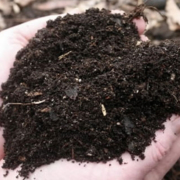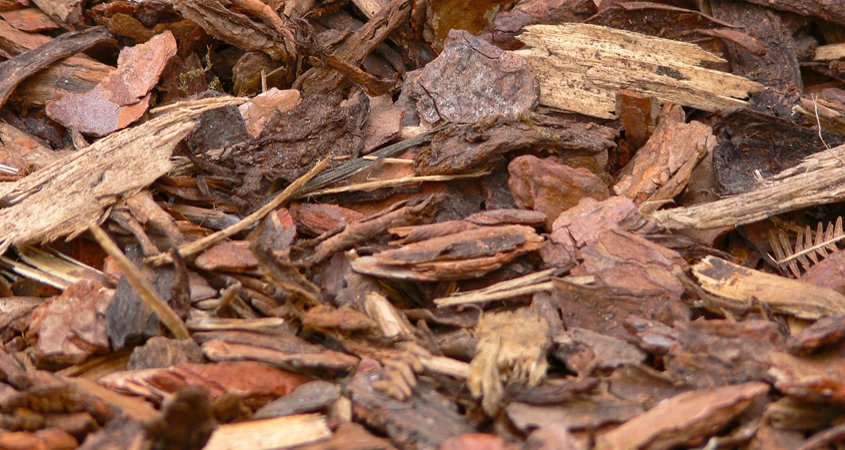A thriving, water-efficient yard in La Mesa is the winner of the Helix Water District’s 2022 WaterSmart Landscape Contest.
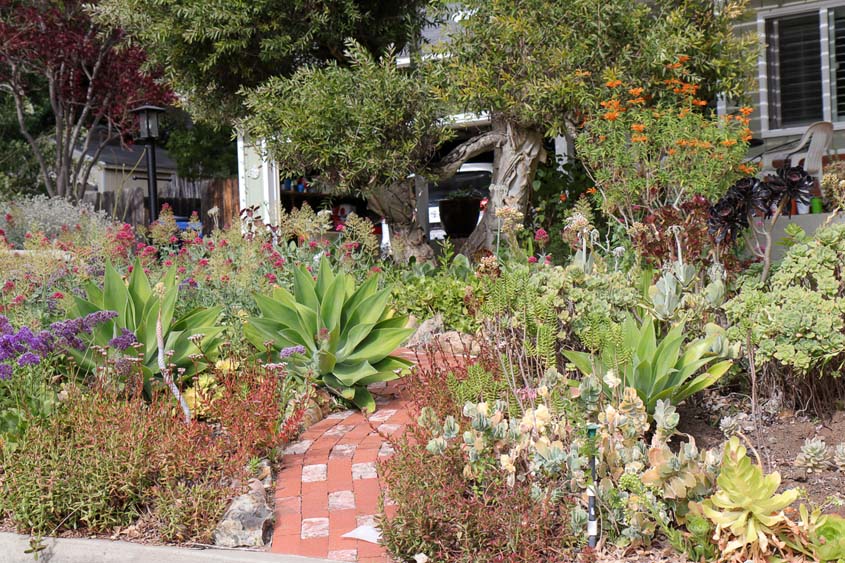
Nick Voinov used multiple layers of succulents, plants, and trees to create his winning landscaping. Photo: Helix Water District
Homeowner Nick Voinov worked for a decade to transform his turf into its current watersmart residential landscape. It didn’t always look as bright and colorful as it does today.
“I love plants and found them more appealing than a lawn,” said Voinov. “I thought it was a bit of a waste because I had to water it every day, and then once you mowed it, it was hauled off to the dump. It was like a crop that you grew and then threw away.”
Proper preparation yielded impressive results
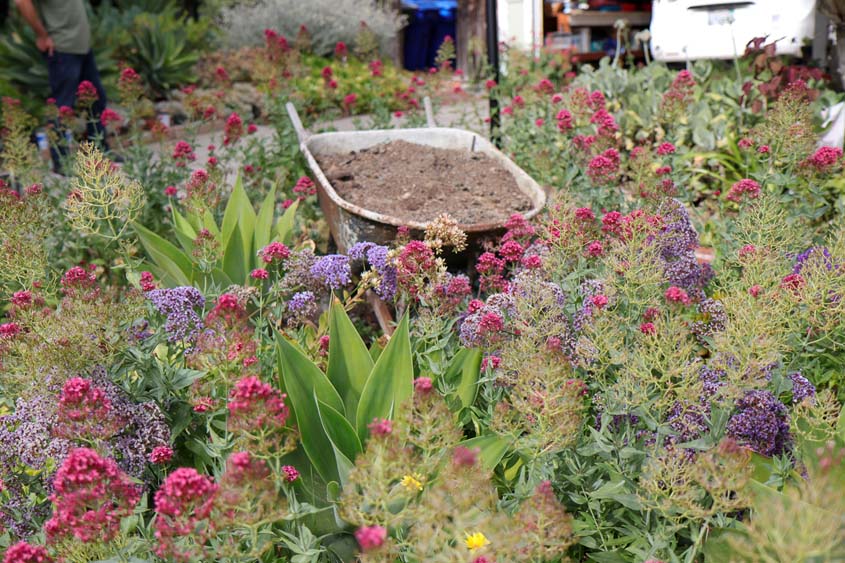
Proper soil preparation was a key to the success of this award-winning Watersmart landscape. Photo: Helix Water District
Voinov removed his old lawn and composted it into the soil. He added nutrients by mixing in manure from a local horse ranch. Once he prepared the soil and had an open canvas, he began planting.
The result is multiple layers of succulents, drifts of flowering low-water use plants, and colorful trees, giving the garden a theme with design consistency. Voinov based his design around maintaining a natural appearance to make the garden more welcoming. Plants grow together and spill over walkways and walls, softening transitions and borderlines.
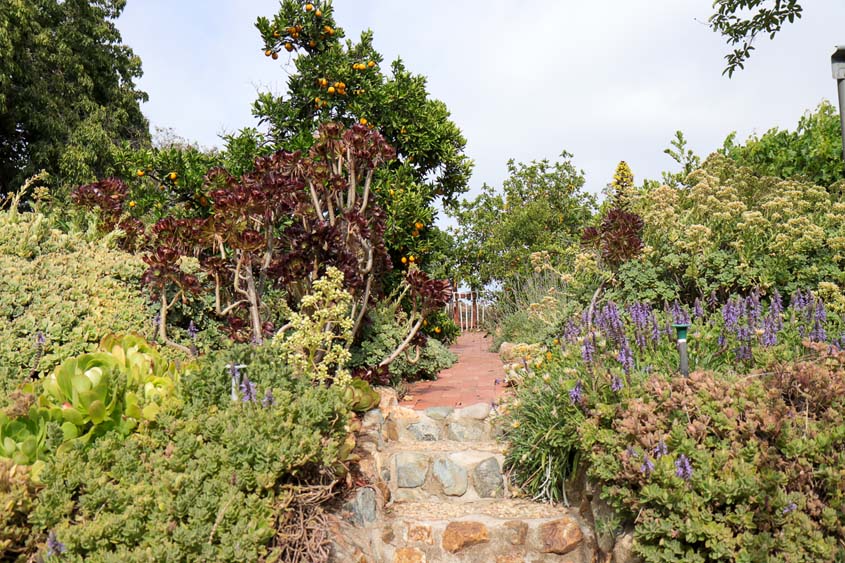
Plants spill over walkways and planters for a lush appearance. Photo: Helix Water District
“Succulents were my top choice of plants. People would give me clippings; I love them because you can clip them off and start new ones. Anyone can do it,” said Voinov. He said it’s also also cost-effective.
Voinov irrigates efficiently by deep watering with sprinklers once every two weeks during the summer season. Letting the soil dry out between watering encourages plants to grow deeper roots and helps them access more water, maximizing irrigation. During the cooler months, the plants do not require any irrigation.
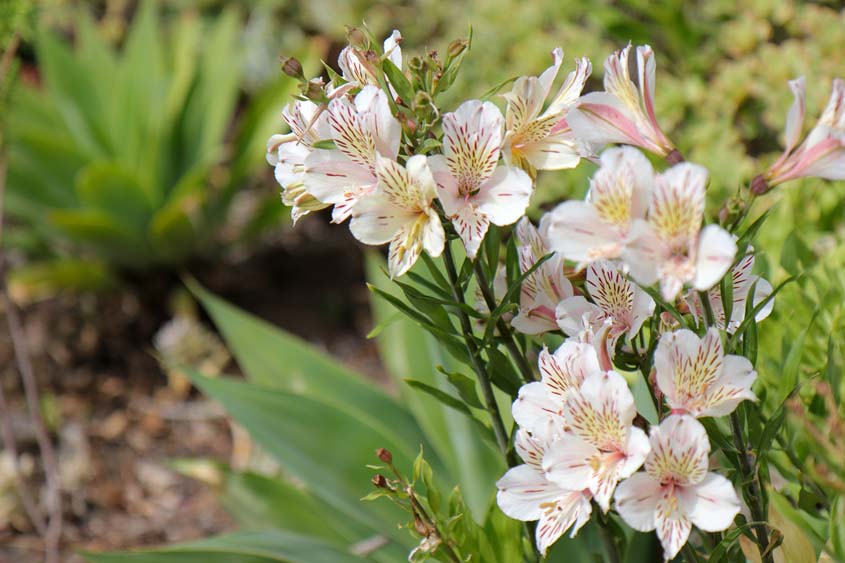
Homeowner Nick Voinov maximizes rainwater capture and use where possible. Photo: Helix Water District
The landscape uses rainwater as a resource. The current rainwater catchment system can collect 700 gallons and refills after most storms. During large storms, Voinov directs surplus rainwater to his fruit trees to maximize the amount of water that reaches his landscape.
“I like to make things as efficient as possible. Rainwater is free, and if I can save and collect that water, I will,” said Voinov.
Water-efficiency
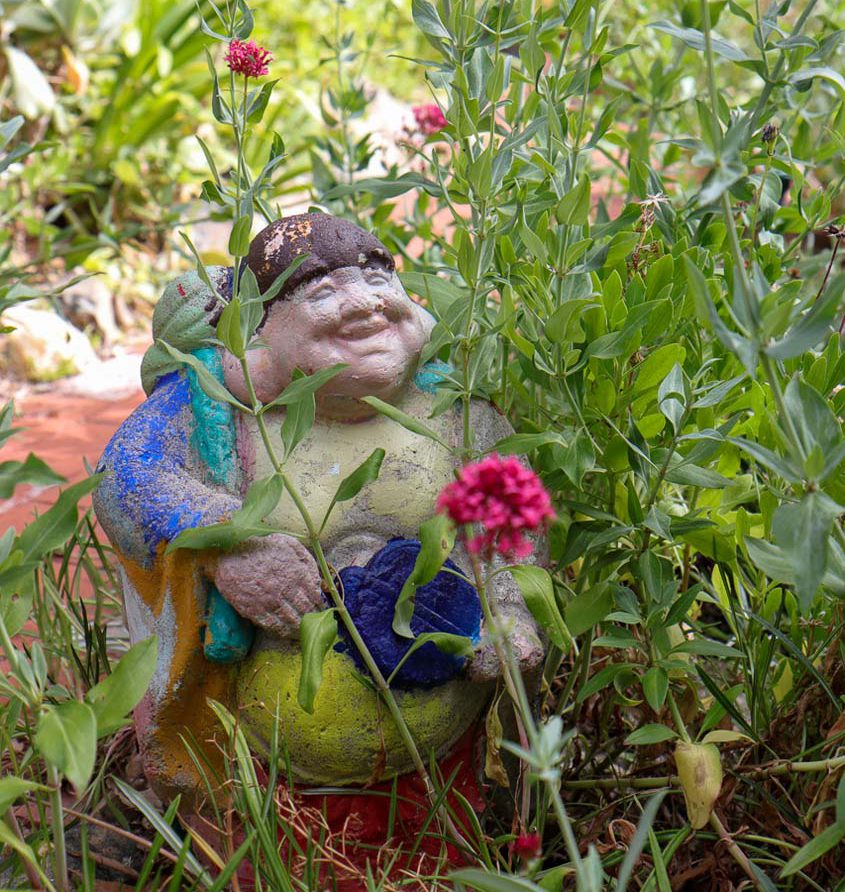
The charming, colorful landscape demonstrates the many options for watersmart landscaping. Photo: Helix Water District
With a water-efficient yard, a rainwater capture system, and WaterSmart home habits like collecting and reusing shower warm-up water, Nick Voinov and his family of five use a maximum of 20 units of water each 60-day billing cycle. That is less than half of what a typical family of five with a similar-sized landscape uses.
“I make a great effort with my family to conserve water because it is important to us,” said Voinov. “We know how precious water is in California, and I really wanted to see if what I do does make a difference.”
The Helix Water District Board of Directors recognized Nick Voinov at its June board meeting, complimenting his work and presenting him a $250 gift card, a yard sign, and an award certificate.
The annual landscape contest runs from January through mid-May each year.
(Editor’s note: The Helix Water District is one of the San Diego County Water Authority’s 24 member agencies that deliver water across the metropolitan San Diego region.)


